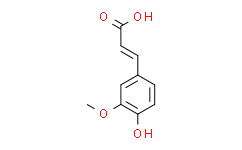
购物车0
产品总数:60942

Ferulic acid 是一种新型的成纤维细胞生长因子受体 1 (FGFR1) 抑制剂, 对于 FGFR1 和 FGFR2 的 IC50值分别为 3.78 和 12.5 μM。Ferulic acid 是一种新型的成纤维细胞生长因子受体 1 (FGFR1) 抑制剂, 对于 FGFR1 和 FGFR2 的 IC50值分别为 3.78 和 12.5 μM。

 扫码关注公众号
扫码关注公众号